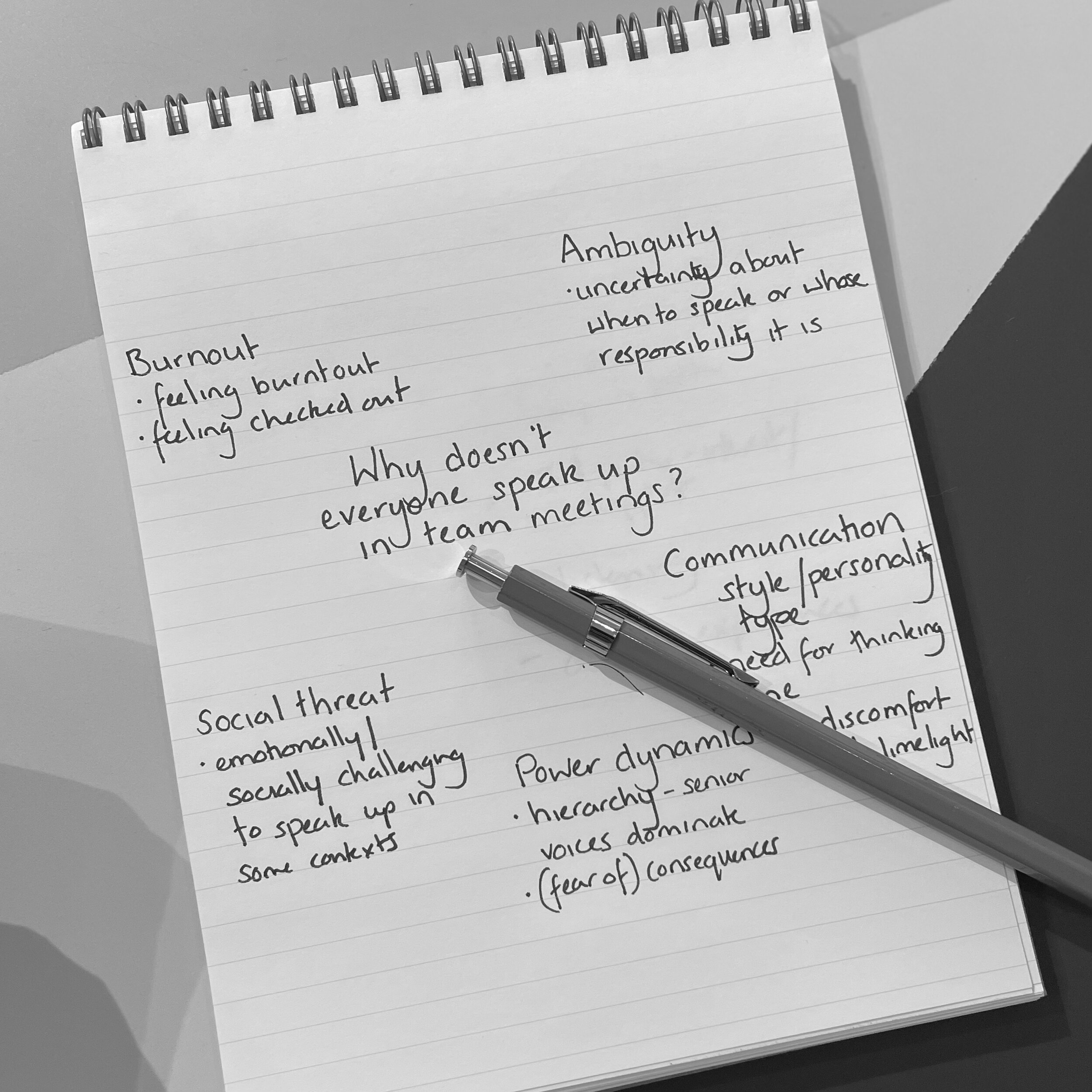Client Challenge | making meetings more inclusive - and more productive
How do we make sure the same handful of voices don’t dominate our meetings?
How do we coach the quieter folks to speak up more?
How do I - a more confident communicator - make sure I’m not talking over others?
How do I - a quieter person - get a word in?
These related questions come up a lot for our clients.
Small firms, large ones, diverse industries, remote teams, and in-person ones… All seem to face the same challenge: making sure people get the right amount of “air time” in meetings. And beyond that, making sure everyone is involved, engaged, and motivated to contribute.
This touches on a lot of our sweet spots: personality types, communication skills, and workplace culture - not to mention psychological safety, team effectiveness, and diversity-and-inclusion.
As you might expect, we have answers. But first: context.
Why does this matter?
Environments where innovation and inclusion are meaningfully embraced benefit from a larger, richer pool of ideas and expertise. In other words, where more people feel comfortable sharing their insights and ideas, the whole team benefits.
Consider the counter example: where only a few people regularly contribute, others stay silent on important issues and are less-inclined to share ideas or raise red flags. And we don’t have to look far for examples of organizations that miss red flags.
In addition, environments where the same few voices dominate tend to be less-inclusive in other respects. (Consider who speaks up most in your organization - does this represent a diverse set of voices? Think about gender, class, race, educational background, etc.)
Moreover, too often talented people leave organizations because they don’t have the opportunity to meaningfully contribute - and frequently, their leaders don’t realize until it’s too late.
Isn’t it fine for some people to talk more?
Yes - with two caveats: that they have something meaningful to contribute and that their dominance isn’t making it too challenging for others to speak up.
Don’t the quiet people just have nothing to say?
No! While not everyone has a winning idea or contribution every single time, many quieter folks do have meaningful contributions to make - they just might need more time to articulate their idea, more encouragement to speak up in a group setting, or someone higher-up championing/encouraging them (particularly if they’re the only person of their gender, race, background, etc).
And those reasons are merely the tip of the iceberg. I scribbled down some reasons people don’t speak up in meetings here:
A page from my notebook detailing reasons people might not speak up in meetings: ambiguity about who should be speaking, different communications styles and personality types, power dynamics, social threat/lack of psychological safety, and burnout.
What can be done?
A multilayered approach usually the best approach. In other words, don’t just hope telling quieter people to “be more confident” will improve things - apart from anything else, getting some people to talk more is just one part of the challenge and confidence might not be the underlying issue (it rarely is).
Approach quieter folks in advance.
Before your meetings, email the quieter folks individually - this gives them some time to prepare and a confidence boost which might be helpful, and, if not, you might also learn exactly why they’re not speaking up.
For example, “You have good ideas to contribute and the team would benefit from hearing more from you. Would you be willing to give a brief update on ____ in our meeting later this week?” Or “Heads-up - I’m going to call on you during our discussion of ____. Let me know if you have questions or would like to have a quick chat beforehand.”
Those of us who are more introverted (more earth green or cool blue, in Insights terms) tend to think-to-speak rather than think out loud (as our more-extroverted colleagues do). In other words, a heads-up can make a big difference.
Kindly interrupt the over-talkers.
How? Use a brief summary to show that you’ve heard their contribution, then pivot to another voice or topic. Be sure to use good tone (smiling helps) to keep things friendly and polite. For example:
Jim [overtalker]: “…if you look at what I raised last month we have a clear mandate to proceed with…”
Facilitator, interjecting: “It sounds like you’re seeing a mandate. Samantha, what’s your read on the situation?” (By showing Jim he’s been heard, Jim doesn’t feel rudely interrupted - and people like to be listened to.)
Or, Facilitator: “Jim, it sounds like you’re seeing a mandate. Why don’t we connect offline to discuss further. In the time we have left today, let’s jump into [different topic]. Farah, do you want to give us an update on ABC?”
Use a shared language to address opportunities.
You might have team values that support this. For example, “In the spirit of inclusion (and getting the best from the team), I want to make sure we hear from anyone who has an idea or thought to share… [If no one steps up, call someone in] Sarah, what are your thoughts on ____?” Or “We thrive on innovation - and that means sharing ideas, no matter how outlandish they might seem. I want to hear from you - and if you need a little more time with it, feel free to stay behind or to email me your thoughts later...”
Note: this approach only works when your values are already a real part of your culture, actively engaged with and worked on. (And if your list of values is merely gathering dust on a poster, talk to us.)
The Insights colors can be particularly helpful in this respect and others. For example, “As a team, let’s dial up some earth green to make sure everyone has had a chance to share their thoughts/feelings.” Or “Let’s call on some cool blue to make sure we’re addressing the details…” This de-personalizes the challenge to everyone feels a part of the solution.
Ultimately, meetings where only a few people speak up are a product of a combination of dynamics: mix of personality types, communications skills, and the broader workplace culture (the dominant approach to meetings, who gets to speak up/inclusivity, and psychological safety). As a result, we have to address the challenge holistically, engaging intangibles, skills, and cultural dynamics.
Talk to us so we can get to know your culture and tailor an approach to enhancing it - whatever the dominant communication style.
—
Ellie Hearne is founder of Pencil or Ink – a leadership-communications practice in New York City. She works with leading organizations to enhance performance through culture and is currently studying Organisational Leadership at Oxford University’s Saïd Business School.

